-
EXECUTIVE SUMMARY 21
-
MARKET ATTRACTIVENESS ANALYSIS 22
-
MARKET INTRODUCTION 23
-
DEFINITION 23
-
SCOPE OF THE STUDY 23
-
RESEARCH OBJECTIVE 23
-
MARKET STRUCTURE 24
-
RESEARCH METHODOLOGY 25
-
MARKET DYNAMICS 31
-
INTRODUCTION 31
-
DRIVERS 32
- DIGITAL BUSINESS ACCELERATION DRIVING APPLICATION DELIVERY 32
- ELIMINATION OF GAPS IN THE REQUIRED IT SKILLS 32
- INCREASING NUMBER OF APPLICATION PROGRAMMING INTERFACE (API) OFFERINGS BY THE SOLUTION VENDORS 33
- DRIVERS IMPACT ANALYSIS 34
-
RESTRAINTS 34
- LACK OF VISIBILITY 34
- NO DATA OVERSIGHT 35
- RESTRAINT IMPACT ANALYSIS 35
-
OPPORTUNITIES 35
- DIGITIZATION IN THE IT INDUSTRY 35
- SAAS AND HYPER-AUTOMATION 36
-
CHALLENGES (BY REGION) 36
- REQUIREMENT OF DEVELOPERS BEYOND SIMPLE USE CASES 36
- REQUIREMENT OF EXTENSIVE TRAINING 36
-
COVID-19 IMPACT ANALYSIS 37
- SURGE IN REMOTE DEVELOPMENT DURING THE PANDEMIC 37
- IMPACT ON IT EXPENDITURE AMONG ENTERPRISES 37
- THE CASE FOR LOW-CODE DEVELOPMENT IN THE POST-COVID LANDSCAPE 37
-
MARKET FACTOR ANALYSIS 38
-
VALUE CHAIN ANALYSIS 38
- SOFTWARE DESIGNERS & DEVELOPERS 38
- SYSTEM INTEGRATORS 38
- END USERS 39
-
PORTER'S FIVE FORCES MODEL 39
- THREAT OF NEW ENTRANTS 40
- BARGAINING POWER OF SUPPLIERS 40
- THREAT OF SUBSTITUTES 40
- BARGAINING POWER OF BUYERS 40
- INTENSITY OF RIVALRY 40
-
GLOBAL LOW CODE DEVELOPMENT PLATFORM MARKET, BY COMPONENT 41
-
OVERVIEW 41
- GLOBAL LOW CODE DEVELOPMENT PLATFORM MARKET, BY COMPONENT, 2018–2035 (USD MILLION) 42
-
SOLUTION 42
- GLOBAL LOW CODE DEVELOPMENT PLATFORM MARKET, BY SOLUTION, 2018–2035 (USD MILLION) 42
- MOBILE SOLUTIONS 42
- WEB SOLUTIONS 42
-
SERVICE 42
- GLOBAL LOW CODE DEVELOPMENT PLATFORM MARKET, BY SERVICE, 2018–2035 (USD MILLION) 43
- PROFESSIONAL SERVICES 43
- MANAGED SERVICES 43
-
GLOBAL LOW CODE DEVELOPMENT PLATFORM MARKET, BY TYPE 44
-
OVERVIEW 44
- GLOBAL LOW CODE DEVELOPMENT PLATFORM MARKET, BY TYPE, 2018–2035 (USD MILLION) 45
-
GENERAL-PURPOSE PLATFORM 45
-
DATABASE APP PLATFORM 45
-
PROCESS APP PLATFORM 45
-
REQUEST HANDLING PLATFORM 45
-
OTHERS 45
-
GLOBAL LOW CODE DEVELOPMENT PLATFORM MARKET, BY DEPLOYMENT 46
-
OVERVIEW 46
- GLOBAL LOW CODE DEVELOPMENT PLATFORM MARKET, BY DEPLOYMENT, 2018–2035 (USD MILLION) 47
-
ON-PREMISES 47
-
ON-CLOUD 47
- GLOBAL LOW CODE DEVELOPMENT PLATFORM MARKET, BY ON-CLOUD, 2018–2035 (USD MILLION) 47
- PUBLIC CLOUD 47
- PRIVATE CLOUD 47
- HYBRID CLOUD 48
-
GLOBAL LOW CODE DEVELOPMENT PLATFORM MARKET, BY ORGANIZATION SIZE 49
-
OVERVIEW 49
- GLOBAL LOW CODE DEVELOPMENT PLATFORM MARKET, BY ORGANIZATION SIZE, 2018–2035 (USD MILLION) 50
-
SMALL AND MEDIUM ENTERPRISE 50
-
LARGE ENTERPRISE 50
-
GLOBAL LOW CODE DEVELOPMENT PLATFORM MARKET, BY VERTICAL 51
-
OVERVIEW 51
- GLOBAL LOW CODE DEVELOPMENT PLATFORM MARKET, BY VERTICAL, 2018–2035 (USD MILLION) 52
-
RETAIL AND E-COMMERCE 52
-
HEALTHCARE 52
-
MEDIA & ENTERTAINMENT 52
-
BFSI 52
-
IT & TELECOMMUNICATION 53
-
GOVERNMENT 53
-
OTHERS 53
-
GLOBAL LOW CODE DEVELOPMENT PLATFORM MARKET, BY REGION 54
-
OVERVIEW 54
- GLOBAL LOW CODE DEVELOPMENT PLATFORM MARKET, BY REGION, 2024 VS 2035 (USD MILLION) 54
- GLOBAL LOW CODE DEVELOPMENT PLATFORM MARKET, BY REGION, 2018–2035 (USD MILLION) 55
-
NORTH AMERICA 56
- NORTH AMERICA: LOW CODE DEVELOPMENT PLATFORM MARKET, BY COUNTRY, 2018–2035 (USD MILLION) 57
- NORTH AMERICA: LOW CODE DEVELOPMENT PLATFORM MARKET, BY COMPONENT, 2018–2035 (USD MILLION) 57
- NORTH AMERICA: LOW CODE DEVELOPMENT PLATFORM MARKET, BY SOLUTION, 2018–2035 (USD MILLION) 57
- NORTH AMERICA: LOW CODE DEVELOPMENT PLATFORM MARKET, BY SERVICE, 2018–2035 (USD MILLION) 57
- NORTH AMERICA: LOW CODE DEVELOPMENT PLATFORM MARKET, BY TYPE, 2018–2035 (USD MILLION) 58
- NORTH AMERICA: LOW CODE DEVELOPMENT PLATFORM MARKET, BY DEPLOYMENT, 2018–2035 (USD MILLION) 58
- NORTH AMERICA: LOW CODE DEVELOPMENT PLATFORM MARKET, BY ON-CLOUD, 2018–2035 (USD MILLION) 58
- NORTH AMERICA: LOW CODE DEVELOPMENT PLATFORM MARKET, BY ORGANIZATION SIZE, 2018–2035 (USD MILLION) 59
- NORTH AMERICA: LOW CODE DEVELOPMENT PLATFORM MARKET, BY VERTICAL, 2018–2035 (USD MILLION) 59
- US 59
- CANADA 62
- MEXICO 64
-
EUROPE 66
- EUROPE: LOW CODE DEVELOPMENT PLATFORM MARKET, BY COUNTRY, 2018–2035 (USD MILLION) 67
- EUROPE: LOW CODE DEVELOPMENT PLATFORM MARKET, BY COMPONENT, 2018–2035 (USD MILLION) 68
- EUROPE: LOW CODE DEVELOPMENT PLATFORM MARKET, BY SOLUTION, 2018–2035 (USD MILLION) 68
- EUROPE: LOW CODE DEVELOPMENT PLATFORM MARKET, BY SERVICE, 2018–2035 (USD MILLION) 68
- EUROPE: LOW CODE DEVELOPMENT PLATFORM MARKET, BY TYPE, 2018–2035 (USD MILLION) 68
- EUROPE: LOW CODE DEVELOPMENT PLATFORM MARKET, BY DEPLOYMENT, 2018–2035 (USD MILLION) 69
- EUROPE: LOW CODE DEVELOPMENT PLATFORM MARKET, BY ON-CLOUD, 2018–2035 (USD MILLION) 69
- EUROPE: LOW CODE DEVELOPMENT PLATFORM MARKET, BY ORGANIZATION SIZE, 2018–2035 (USD MILLION) 69
- EUROPE: LOW CODE DEVELOPMENT PLATFORM MARKET, BY VERTICAL, 2018–2035 (USD MILLION) 69
- UK 70
- GERMANY 72
- FRANCE 75
- REST OF EUROPE 77
-
ASIA-PACIFIC 80
- ASIA-PACIFIC: LOW CODE DEVELOPMENT PLATFORM MARKET, BY COUNTRY, 2018–2035 (USD MILLION) 81
- ASIA-PACIFIC: LOW CODE DEVELOPMENT PLATFORM MARKET, BY COMPONENT, 2018–2035 (USD MILLION) 81
- ASIA-PACIFIC: LOW CODE DEVELOPMENT PLATFORM MARKET, BY SOLUTION, 2018–2035 (USD MILLION) 81
- ASIA-PACIFIC: LOW CODE DEVELOPMENT PLATFORM MARKET, BY SERVICE, 2018–2035 (USD MILLION) 82
- ASIA-PACIFIC: LOW CODE DEVELOPMENT PLATFORM MARKET, BY TYPE, 2018–2035 (USD MILLION) 82
- ASIA-PACIFIC: LOW CODE DEVELOPMENT PLATFORM MARKET, BY DEPLOYMENT, 2018–2035 (USD MILLION) 82
- ASIA-PACIFIC: LOW CODE DEVELOPMENT PLATFORM MARKET, BY ON-CLOUD, 2018–2035 (USD MILLION) 83
- ASIA-PACIFIC: LOW CODE DEVELOPMENT PLATFORM MARKET, BY ORGANIZATION SIZE, 2018–2035 (USD MILLION) 83
- ASIA-PACIFIC: LOW CODE DEVELOPMENT PLATFORM MARKET, BY VERTICAL, 2018–2035 (USD MILLION) 83
- CHINA 85
- JAPAN 87
- INDIA 90
- AUSTRALIA 92
- NEW ZEALAND 94
- SOUTHEAST ASIA 97
- REST OF ASIA-PACIFIC 99
-
MIDDLE EAST 102
- MIDDLE EAST: LOW CODE DEVELOPMENT PLATFORM MARKET, BY COMPONENT, 2018–2035 (USD MILLION) 102
- MIDDLE EAST: LOW CODE DEVELOPMENT PLATFORM MARKET, BY SOLUTION, 2018–2035 (USD MILLION) 102
- MIDDLE EAST: LOW CODE DEVELOPMENT PLATFORM MARKET, BY SERVICE, 2018–2035 (USD MILLION) 102
- MIDDLE EAST: LOW CODE DEVELOPMENT PLATFORM MARKET, BY TYPE, 2018–2035 (USD MILLION) 103
- MIDDLE EAST: LOW CODE DEVELOPMENT PLATFORM MARKET, BY DEPLOYMENT, 2018–2035 (USD MILLION) 103
- MIDDLE EAST: LOW CODE DEVELOPMENT PLATFORM MARKET, BY ON-CLOUD, 2018–2035 (USD MILLION) 103
- MIDDLE EAST: LOW CODE DEVELOPMENT PLATFORM MARKET, BY ORGANIZATION SIZE, 2018–2035 (USD MILLION) 104
- MIDDLE EAST: LOW CODE DEVELOPMENT PLATFORM MARKET, BY VERTICAL, 2018–2035 (USD MILLION) 104
-
AFRICA 104
- AFRICA: LOW CODE DEVELOPMENT PLATFORM MARKET, BY COMPONENT, 2018–2035 (USD MILLION) 105
- AFRICA: LOW CODE DEVELOPMENT PLATFORM MARKET, BY SOLUTION, 2018–2035 (USD MILLION) 105
- AFRICA: LOW CODE DEVELOPMENT PLATFORM MARKET, BY SERVICE, 2018–2035 (USD MILLION) 105
- AFRICA: LOW CODE DEVELOPMENT PLATFORM MARKET, BY TYPE, 2018–2035 (USD MILLION) 105
- AFRICA: LOW CODE DEVELOPMENT PLATFORM MARKET, BY DEPLOYMENT, 2018–2035 (USD MILLION) 106
- AFRICA: LOW CODE DEVELOPMENT PLATFORM MARKET, BY ON-CLOUD, 2018–2035 (USD MILLION) 106
- AFRICA: LOW CODE DEVELOPMENT PLATFORM MARKET, BY ORGANIZATION SIZE, 2018–2035 (USD MILLION) 106
- AFRICA: LOW CODE DEVELOPMENT PLATFORM MARKET, BY VERTICAL, 2018–2035 (USD MILLION) 106
-
SOUTH AMERICA 108
- SOUTH AMERICA: LOW CODE DEVELOPMENT PLATFORM MARKET, BY COMPONENT, 2018–2035 (USD MILLION) 108
- SOUTH AMERICA: LOW CODE DEVELOPMENT PLATFORM MARKET, BY SOLUTION, 2018–2035 (USD MILLION) 108
- SOUTH AMERICA: LOW CODE DEVELOPMENT PLATFORM MARKET, BY SERVICE, 2018–2035 (USD MILLION) 108
- SOUTH AMERICA: LOW CODE DEVELOPMENT PLATFORM MARKET, BY TYPE, 2018–2035 (USD MILLION) 109
- SOUTH AMERICA: LOW CODE DEVELOPMENT PLATFORM MARKET, BY DEPLOYMENT, 2018–2035 (USD MILLION) 109
- SOUTH AMERICA: LOW CODE DEVELOPMENT PLATFORM MARKET, BY ON-CLOUD, 2018–2035 (USD MILLION) 109
- SOUTH AMERICA: LOW CODE DEVELOPMENT PLATFORM MARKET, BY ORGANIZATION SIZE, 2018–2035 (USD MILLION) 110
- SOUTH AMERICA: LOW CODE DEVELOPMENT PLATFORM MARKET, BY VERTICAL, 2018–2035 (USD MILLION) 110
-
COMPETITIVE LANDSCAPE 111
-
OVERVIEW 111
-
MARKET SHARE ANALYSIS 112
-
COMPETITIVE BENCHMARKING 113
-
COMPETITOR DASHBOARD 114
-
KEY DEVELOPMENTS & GROWTH STRATEGIES 115
- PRODUCT LAUNCHES/PRODUCT DEVELOPMENTS/SERVICE DEPLOYMENTS 115
- MERGER-ACQUISITION/ EXPANSION/ PARTNERSHIP/JOINT VENTURE 116
-
COMPANY PROFILE 118
-
MICROSOFT 118
- COMPANY OVERVIEW 118
- FINANCIAL OVERVIEW 119
- SOLUTIONS OFFERED 119
- KEY DEVELOPMENTS 120
- SWOT ANALYSIS 120
- KEY STRATEGIES 120
-
SALESFORCE.COM, INC. 121
- COMPANY OVERVIEW 121
- FINANCIAL OVERVIEW 121
- SOLUTIONS OFFERED 122
- KEY DEVELOPMENTS 122
- SWOT ANALYSIS 122
- KEY STRATEGIES 123
-
MENDIX TECHNOLOGY BV 124
- COMPANY OVERVIEW 124
- FINANCIAL OVERVIEW 124
- SOLUTIONS OFFERED 124
- KEY DEVELOPMENTS 125
- KEY STRATEGIES 125
-
APPIAN 126
- COMPANY OVERVIEW 126
- FINANCIAL OVERVIEW 126
- SOLUTIONS OFFERED 126
- KEY DEVELOPMENTS 127
- SWOT ANALYSIS 128
- KEY STRATEGIES 128
-
OUTSYSTEMS 129
- COMPANY OVERVIEW 129
- FINANCIAL OVERVIEW 129
- SOLUTIONS OFFERED 129
- KEY DEVELOPMENTS 129
- KEY STRATEGIES 130
-
PEGASYSTEMS INC. 131
- COMPANY OVERVIEW 131
- FINANCIAL OVERVIEW 131
- SOLUTIONS OFFERED 132
- KEY DEVELOPMENTS 132
- SWOT ANALYSIS 132
- KEY STRATEGIES 133
-
SERVICENOW 134
- COMPANY OVERVIEW 134
- FINANCIAL OVERVIEW 134
- SOLUTIONS OFFERED 135
- KEY DEVELOPMENTS 135
- SWOT ANALYSIS 136
- KEY STRATEGIES 136
-
AGILEPOINT 137
- COMPANY OVERVIEW 137
- FINANCIAL OVERVIEW 137
- SOLUTIONS OFFERED 137
- KEY DEVELOPMENTS 137
-
CASPIO, INC. 138
- COMPANY OVERVIEW 138
- FINANCIAL OVERVIEW 138
- SERVICES OFFERED 138
- KEY DEVELOPMENTS 138
-
NINTEX UK LTD 139
- COMPANY OVERVIEW 139
- FINANCIAL OVERVIEW 139
- SOLUTIONS OFFERED 139
- KEY DEVELOPMENTS 139
- KEY STRATEGIES 139
-
NETCALL 140
- COMPANY OVERVIEW 140
- FINANCIAL OVERVIEW 140
- SOLUTIONS OFFERED 141
- KEY DEVELOPMENTS 142
- SWOT ANALYSIS 142
- KEY STRATEGIES 142
-
ZOHO CORPORATION PVT. LTD. 143
- COMPANY OVERVIEW 143
- FINANCIAL OVERVIEW 143
- SOLUTIONS OFFERED 143
- KEY DEVELOPMENTS 143
- KEY STRATEGIES 143
-
SIMPLIFIER AG 144
- COMPANY OVERVIEW 144
- FINANCIAL OVERVIEW 144
- SOLUTIONS OFFERED 144
- KEY DEVELOPMENTS 144
- KEY STRATEGIES 144
-
WAVEMAKER, INC. 145
- COMPANY OVERVIEW 145
- FINANCIAL OVERVIEW 145
- SOLUTIONS OFFERED 145
- KEY DEVELOPMENTS 145
-
SKYVE 146
- COMPANY OVERVIEW 146
- FINANCIAL OVERVIEW 146
- SOLUTIONS OFFERED 146
- KEY DEVELOPMENTS 146
-
-
LIST OF TABLES
-
MARKET SYNOPSIS 22
-
GLOBAL LOW CODE DEVELOPMENT PLATFORM MARKET, BY COMPONENT, 2018–2035 (USD MILLION) 42
-
GLOBAL LOW CODE DEVELOPMENT PLATFORM MARKET, BY SOLUTION, 2018–2035 (USD MILLION) 42
-
GLOBAL LOW CODE DEVELOPMENT PLATFORM MARKET, BY SERVICE, 2018–2035 (USD MILLION) 43
-
GLOBAL LOW CODE DEVELOPMENT PLATFORM MARKET, BY TYPE, 2018–2035 (USD MILLION) 45
-
GLOBAL LOW CODE DEVELOPMENT PLATFORM MARKET, BY DEPLOYMENT, 2018–2035 (USD MILLION) 47
-
GLOBAL LOW CODE DEVELOPMENT PLATFORM MARKET, BY ON-CLOUD, 2018–2035 (USD MILLION) 47
-
GLOBAL LOW CODE DEVELOPMENT PLATFORM MARKET, BY ORGANIZATION SIZE, 2018–2035 (USD MILLION) 50
-
GLOBAL LOW CODE DEVELOPMENT PLATFORM MARKET, BY VERTICAL, 2018–2035 (USD MILLION) 52
-
GLOBAL LOW CODE DEVELOPMENT PLATFORM MARKET, BY REGION, 2018–2035 (USD MILLION) 55
-
NORTH AMERICA: LOW CODE DEVELOPMENT PLATFORM MARKET, BY COUNTRY, 2018–2035 (USD MILLION) 57
-
NORTH AMERICA: LOW CODE DEVELOPMENT PLATFORM MARKET, BY COMPONENT, 2018–2035 (USD MILLION) 57
-
NORTH AMERICA: LOW CODE DEVELOPMENT PLATFORM MARKET, BY SOLUTION, 2018–2035 (USD MILLION) 57
-
NORTH AMERICA: LOW CODE DEVELOPMENT PLATFORM MARKET, BY SERVICE, 2018–2035 (USD MILLION) 57
-
NORTH AMERICA: LOW CODE DEVELOPMENT PLATFORM MARKET, BY TYPE, 2018–2035 (USD MILLION) 58
-
NORTH AMERICA: LOW CODE DEVELOPMENT PLATFORM MARKET, BY DEPLOYMENT, 2018–2035 (USD MILLION) 58
-
NORTH AMERICA: LOW CODE DEVELOPMENT PLATFORM MARKET, BY ON-CLOUD, 2018–2035 (USD MILLION) 58
-
NORTH AMERICA: LOW CODE DEVELOPMENT PLATFORM MARKET, BY ORGANIZATION SIZE, 2018–2035 (USD MILLION) 59
-
NORTH AMERICA: LOW CODE DEVELOPMENT PLATFORM MARKET, BY VERTICAL, 2018–2035 (USD MILLION) 59
-
US: LOW CODE DEVELOPMENT PLATFORM MARKET, BY COMPONENT, 2018–2035 (USD MILLION) 59
-
US: LOW CODE DEVELOPMENT PLATFORM MARKET, BY SOLUTION, 2018–2035 (USD MILLION) 60
-
US: LOW CODE DEVELOPMENT PLATFORM MARKET, BY SERVICE, 2018–2035 (USD MILLION) 60
-
US: LOW CODE DEVELOPMENT PLATFORM MARKET, BY TYPE, 2018–2035 (USD MILLION) 60
-
US: LOW CODE DEVELOPMENT PLATFORM MARKET, BY DEPLOYMENT, 2018–2035 (USD MILLION) 60
-
US: LOW CODE DEVELOPMENT PLATFORM MARKET, BY ON-CLOUD, 2018–2035 (USD MILLION) 61
-
US: LOW CODE DEVELOPMENT PLATFORM MARKET, BY ORGANIZATION SIZE, 2018–2035 (USD MILLION) 61
-
US: LOW CODE DEVELOPMENT PLATFORM MARKET, BY VERTICAL, 2018–2035 (USD MILLION) 61
-
CANADA: LOW CODE DEVELOPMENT PLATFORM MARKET, BY COMPONENT, 2018–2035 (USD MILLION) 62
-
CANADA: LOW CODE DEVELOPMENT PLATFORM MARKET, BY SOLUTION, 2018–2035 (USD MILLION) 62
-
CANADA: LOW CODE DEVELOPMENT PLATFORM MARKET, BY SERVICE, 2018–2035 (USD MILLION) 62
-
CANADA: LOW CODE DEVELOPMENT PLATFORM MARKET, BY TYPE, 2018–2035 (USD MILLION) 62
-
CANADA: LOW CODE DEVELOPMENT PLATFORM MARKET, BY DEPLOYMENT, 2018–2035 (USD MILLION) 63
-
CANADA: LOW CODE DEVELOPMENT PLATFORM MARKET, BY ON-CLOUD, 2018–2035 (USD MILLION) 63
-
CANADA: LOW CODE DEVELOPMENT PLATFORM MARKET, BY ORGANIZATION SIZE, 2018–2035 (USD MILLION) 63
-
CANADA: LOW CODE DEVELOPMENT PLATFORM MARKET, BY VERTICAL, 2018–2035 (USD MILLION) 63
-
MEXICO: LOW CODE DEVELOPMENT PLATFORM MARKET, BY COMPONENT, 2018–2035 (USD MILLION) 64
-
MEXICO: LOW CODE DEVELOPMENT PLATFORM MARKET, BY SOLUTION, 2018–2035 (USD MILLION) 64
-
MEXICO: LOW CODE DEVELOPMENT PLATFORM MARKET, BY SERVICE, 2018–2035 (USD MILLION) 64
-
MEXICO: LOW CODE DEVELOPMENT PLATFORM MARKET, BY TYPE, 2018–2035 (USD MILLION) 65
-
MEXICO: LOW CODE DEVELOPMENT PLATFORM MARKET, BY DEPLOYMENT, 2018–2035 (USD MILLION) 65
-
MEXICO: LOW CODE DEVELOPMENT PLATFORM MARKET, BY ON-CLOUD, 2018–2035 (USD MILLION) 65
-
MEXICO: LOW CODE DEVELOPMENT PLATFORM MARKET, BY ORGANIZATION SIZE, 2018–2035 (USD MILLION) 65
-
MEXICO: LOW CODE DEVELOPMENT PLATFORM MARKET, BY VERTICAL, 2018–2035 (USD MILLION) 66
-
EUROPE: LOW CODE DEVELOPMENT PLATFORM MARKET, BY COUNTRY, 2018–2035 (USD MILLION) 67
-
EUROPE: LOW CODE DEVELOPMENT PLATFORM MARKET, BY COMPONENT, 2018–2035 (USD MILLION) 68
-
EUROPE: LOW CODE DEVELOPMENT PLATFORM MARKET, BY SOLUTION, 2018–2035 (USD MILLION) 68
-
EUROPE: LOW CODE DEVELOPMENT PLATFORM MARKET, BY SERVICE, 2018–2035 (USD MILLION) 68
-
EUROPE: LOW CODE DEVELOPMENT PLATFORM MARKET, BY TYPE, 2018–2035 (USD MILLION) 68
-
EUROPE: LOW CODE DEVELOPMENT PLATFORM MARKET, BY DEPLOYMENT, 2018–2035 (USD MILLION) 69
-
EUROPE: LOW CODE DEVELOPMENT PLATFORM MARKET, BY ON-CLOUD, 2018–2035 (USD MILLION) 69
-
EUROPE: LOW CODE DEVELOPMENT PLATFORM MARKET, BY ORGANIZATION SIZE, 2018–2035 (USD MILLION) 69
-
EUROPE: LOW CODE DEVELOPMENT PLATFORM MARKET, BY VERTICAL, 2018–2035 (USD MILLION) 69
-
UK: LOW CODE DEVELOPMENT PLATFORM MARKET, BY COMPONENT, 2018–2035 (USD MILLION) 70
-
UK: LOW CODE DEVELOPMENT PLATFORM MARKET, BY SOLUTION, 2018–2035 (USD MILLION) 70
-
UK: LOW CODE DEVELOPMENT PLATFORM MARKET, BY SERVICE, 2018–2035 (USD MILLION) 70
-
UK: LOW CODE DEVELOPMENT PLATFORM MARKET, BY TYPE, 2018–2035 (USD MILLION) 71
-
UK: LOW CODE DEVELOPMENT PLATFORM MARKET, BY DEPLOYMENT, 2018–2035 (USD MILLION) 71
-
UK: LOW CODE DEVELOPMENT PLATFORM MARKET, BY ON-CLOUD, 2018–2035 (USD MILLION) 71
-
UK: LOW CODE DEVELOPMENT PLATFORM MARKET, BY ORGANIZATION SIZE, 2018–2035 (USD MILLION) 72
-
UK: LOW CODE DEVELOPMENT PLATFORM MARKET, BY VERTICAL, 2018–2035 (USD MILLION) 72
-
GERMANY: LOW CODE DEVELOPMENT PLATFORM MARKET, BY COMPONENT, 2018–2035 (USD MILLION) 72
-
GERMANY: LOW CODE DEVELOPMENT PLATFORM MARKET, BY SOLUTION, 2018–2035 (USD MILLION) 73
-
GERMANY: LOW CODE DEVELOPMENT PLATFORM MARKET, BY SERVICE, 2018–2035 (USD MILLION) 73
-
GERMANY: LOW CODE DEVELOPMENT PLATFORM MARKET, BY TYPE, 2018–2035 (USD MILLION) 73
-
GERMANY: LOW CODE DEVELOPMENT PLATFORM MARKET, BY DEPLOYMENT, 2018–2035 (USD MILLION) 73
-
GERMANY: LOW CODE DEVELOPMENT PLATFORM MARKET, BY ON-CLOUD, 2018–2035 (USD MILLION) 74
-
GERMANY: LOW CODE DEVELOPMENT PLATFORM MARKET, BY ORGANIZAT

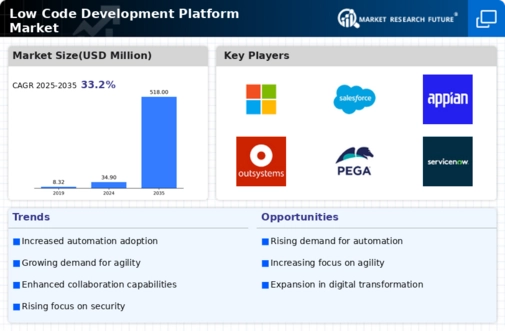
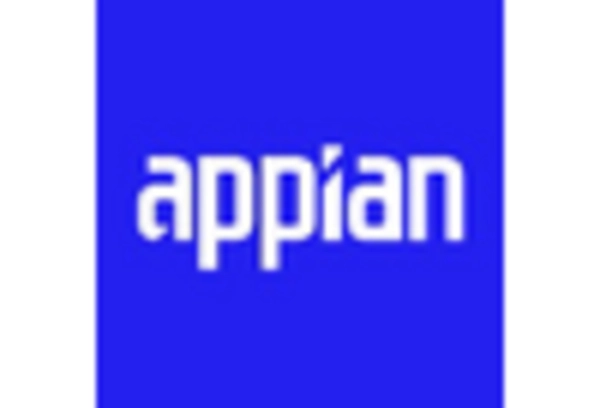
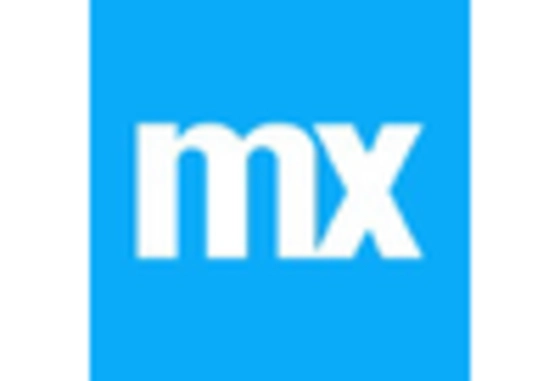

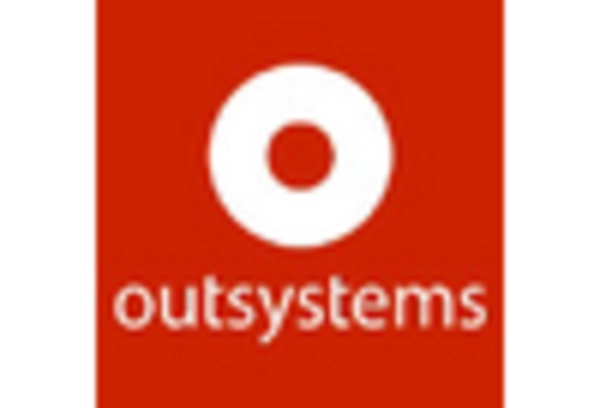

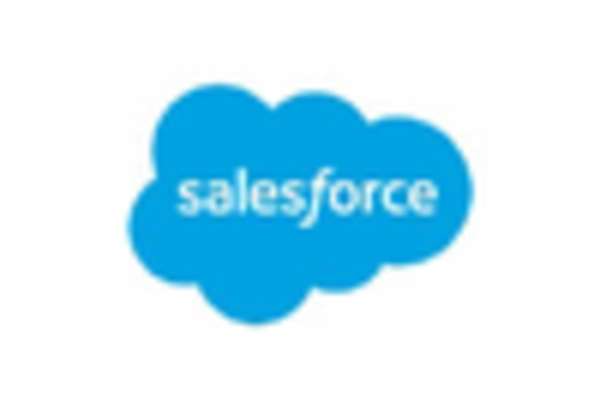

Leave a Comment